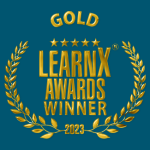What is ‘flipped learning’ and how can it work for RTOs?
The key to all learning is engagement. As many RTOs would know from first-hand experience, students who are not engaged with their learning material or with their classes receive poorer outcomes. Increasing participation and fostering a connection to learning material is an ongoing challenge for educators.
Enter ‘flipped learning’, which (as the name suggests) involves “flipping” education delivery. The student works on theory material traditionally delivered in class at home, with class-time dedicated on active learning methods – such as discussions, group work, role-plays and presentations.
The University of Adelaide describes a flipped learning program as:
“An engaging series of learning segments, that are closely linked to learning and assessment outcomes, that provide feedback to the learner during each stage. Carefully designed pre-class activities assist students to learn key concepts in a self-paced manner, developing their confidence and motivation to engage in peer-led discussions during class that lead to synthesis and application of these key concepts. Post-class assessment activities are clearly connected to pre-class and face-to-face class learning experiences and address ‘capabilities that count,’ making the students’ learning relevant, real and sustainable.”

Benefits for students
Studies have consistently shown that students learn better by doing, rather than just listening. By asking students to focus on topics at a conceptual or theoretical level before class, and then following up with practical, interactive and collaborative tasks in a group setting – to contextualise their knowledge – it’s possible for students to develop a stronger understanding of how a topic applies in real world situations. This also allows them to apply and analyse what they have learnt with others – rather than alone at home – which can provide a valuable feedback loop.
There is greater flexibility in this approach for students too. By completing theory work outside of the classroom, and at their own pace, students are afforded more time to grasp the foundation of a topic than they would in a classroom setting.

Benefits for training providers
With more interactive content and tasks being set on-site, providers should experience higher levels of engagement between teachers and students in the classroom. This is not only a boon for providers, who may find flipped learning easier to teach, but students appreciate it too. A study from 2016 showed that 75% of students in a flipped classroom held a positive attitude to their course and to the model in particular!1
CRICOS providers can also benefit by implementing flipped learning for “distance learning” hours, allowing students to focus on theoretical concepts during this time – while dedicating the classroom component to practical learning. This is allowable under the National Code, for up to 6.5 hours per week of 20 contact hours.
How RTO Works is incorporating flipped learning
We’re focusing on extending the principles of flipped learning into new learning and assessment material that we’re currently developing. We’ll let you know more about this in the coming months! Our team believes that offering more flexible learning models, backed by recognised studies into their efficacy – is important when providing a wide range of resources to training providers.
In the meantime, we encourage RTOs to bring practical elements, team tasks and engagement-focused challenges into their classes by using our custom-made Learning Packs. Not only are they designed for maximum participation, they support classroom learning by also connecting with our Self-Study Guides.
Even if classroom education looks a little different during the current coronavirus situation, RTOs can still apply these principles by focusing on group work or discussion forums during online lessons. Allowing students to learn theory at their own pace – and building on those basics with well-supported and participation-driven classes – is the first step to providing increased engagement in education.
1: https://educationaltechnologyjournal.springeropen.com/articles/10.1186/s41239-016-0032-z




